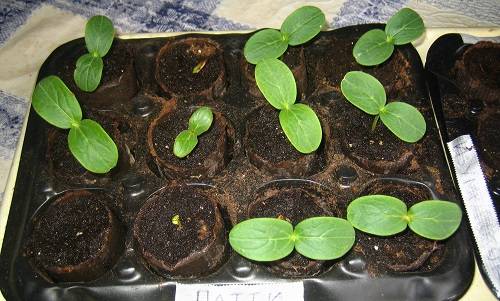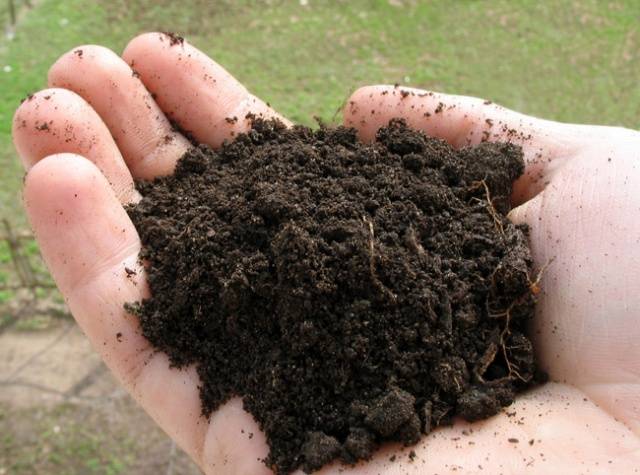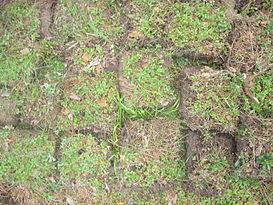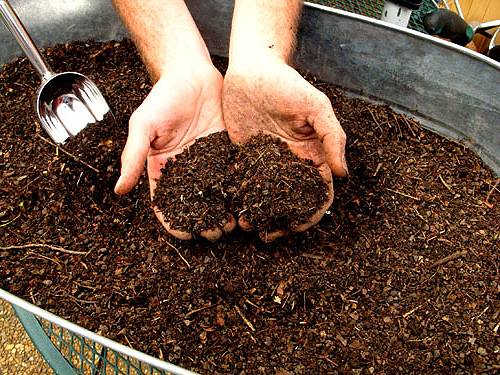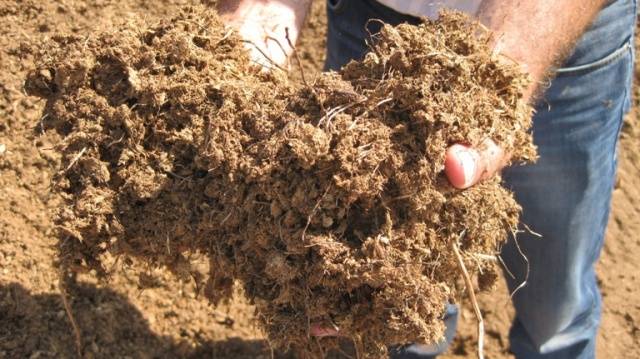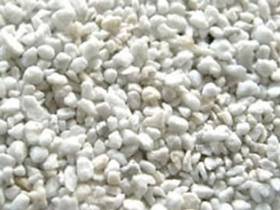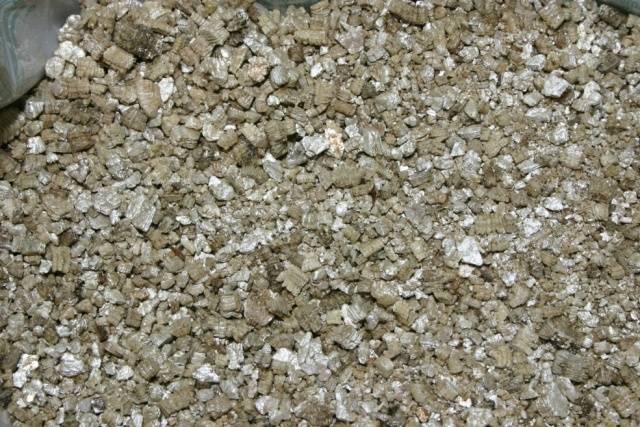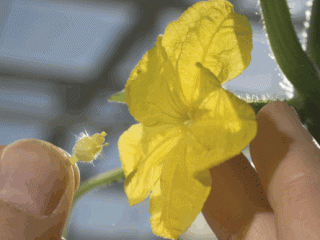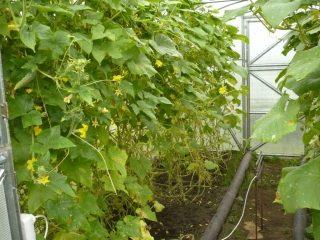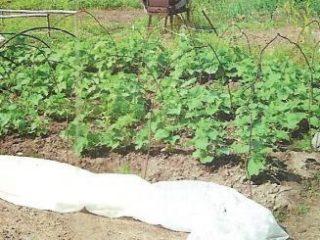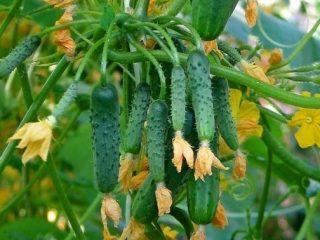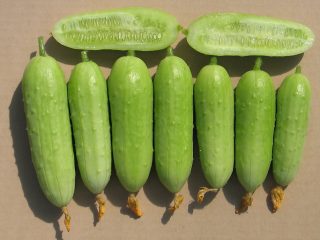Content
The main mistake novice gardeners make is trying to grow seedlings in soil taken from their own garden. The idea of “stick it in and forget it, sometimes water it” is very tempting, but in the case of cultivated garden plants it will have to be abandoned. Garden soil in the fall is saturated with pathogens and poor in nutrients. The nutrients were “sucked” out of it by the plants that grew on it in the summer. Pathogenic organisms that are not capable of harming a mature plant may well kill young and tender seedlings.
Microorganisms can be killed by disinfection, but fertilizers will have to be added to the soil. That is, in fact, you will need to make the soil for seedlings yourself. If you still have to mix different ingredients, then there is no point in bringing soil from the garden.
In addition, the soil in the garden rarely meets all the requirements for soil for cucumber seedlings. Such soil is found only in the Black Earth zone of Russia. In other cases, the soil is either very sandy or clayey.
It is better to buy ready-made soil or prepare the ingredients for high-quality soil yourself.
In any case, for the first few years, a beginning gardener will either need to buy a ready-made mixture for seedlings of cucumbers, or mix purchased ingredients.
In stores you can buy two types of soil suitable for growing seedlings: soil mixture and seedling substrate.
soil mixture
A composition containing components of organic origin: rotted leaves, compost, humus, peat, and inorganic ingredients. For example, sand.
Seedling substrate
Any material that can replace soil: sphagnum, sawdust, coconut fibers, sand, mineral wool - saturated with nutrients.
Whatever industrial soil compositions for cucumbers are made from, they must have the following properties:
- looseness and breathability;
- acidity from 6.4 to 7.0;
- a comprehensive set of all necessary micro- and macroelements;
- good water absorption.
You can prepare the soil for cucumber seedlings yourself. There are many recipes for soil for cucumber seedlings. Experienced gardeners always have their own secrets.
The classic universal version includes only four components: two parts of garden soil and one part each of low-lying peat, humus or rotted compost and sand or sawdust from deciduous trees.
The acidity of lowland peat ranges from 5.5 to 7.0. If the acidity is too high, add a little lime or ash. At the same time, it is quite difficult to determine the exact amount of alkali added at home.You may not need to add anything at all if the acidity of your specific peat meets the requirements that cucumbers place on the soil.
Not everything is simple with sawdust either. When overheated, they actively absorb nitrogen from the ground. As a result, the seedlings are deprived of this important component. When preparing the soil, you need to soak the sawdust with urea.
Complex fertilizer is added to the resulting soil. From forty to eighty grams per bucket.
You can use a special earthen mixture for cucumbers. Experienced gardeners really don’t like ready-made substrates for cucumber seedlings, since such substrates are made on the basis of peat. If the soil dries out (forgot to water), the peat stops absorbing water and the seedlings dry out.
Such a disaster can be avoided if you prepare special soil for cucumber seedlings without using acidic components. True, you still can’t do without peat.
Four basic recipes for soil for seedlings
First option
Two parts each of peat soil and humus plus one part of rotted sawdust from deciduous trees. Add ash and fertilizer at the rate of: a glass of ash per bucket and a teaspoon of potassium sulfate, urea and superphosphate.
Second option
Equal parts turf soil and compost or humus. A glass of ash on a bucket of mixture, potassium sulfate ten grams, superphosphate twenty grams.
Third option
For six parts of peat, one part each of sand, sawdust, humus and mullein.
Fourth option
Turf soil, humus, peat, old sawdust. All components are equal.
Many of these components can be purchased. Others are relatively easy to make yourself. You can independently make all the components of the soil for cucumber seedlings.In order to be able to prepare the soil for seedlings yourself by making the necessary components for it, you need to understand what all these components come from. It’s also worth understanding their qualities.
Soil components
Mullein
This is fresh cow dung. On the one hand, it is a good fertilizer for cucumber seedlings. On the other hand, it is a source of pathogenic bacteria and weed seeds. In addition, fresh manure decomposes, releasing heat. If the soil temperature rises above fifty degrees, the plants may die.
Sawdust
Fresh or old sawdust acts as a leavening agent in the soil for seedlings. Wood-decomposing bacteria actively consume nitrogen from the soil. The rotted ones are called “tree soil” and are also used to prepare the soil. To obtain woody soil, sawdust must rot for at least a year. The reheating time depends on the size of the sawdust. It will take at least three years for large sawdust to melt to ground condition.
Sod land
Sometimes called simply turf, although this is incorrect. Turf is the top layer of soil held together by grass roots, as well as cut pieces of this soil. This is a preparation for obtaining turf land.
The soil is distinguished by a small amount of nitrogen, humus and organic matter. They begin to harvest turf for it in the spring or late summer.
To obtain such land, a grassy area is chosen. The best option would be a meadow where clover grew. Cut the turf to size 25x30 cm and thickness... as it turns out. The thickness of the turf does not depend on the person. If possible, you should choose an area with a turf thickness of six to twelve centimeters.If this is not possible, you will have to accept it.
The chopped turf is stacked in pairs so that the grass-covered sides of each pair touch. To speed up the process of overheating, each pair is coated with mullein or horse manure. Stacks must be laid out in a shaded area.
Humus
Completely rotted manure. Very rich in nutrients. Light, loose. Consists of plant residues. Added to almost all mixtures. It is humus soil that is the main source of nutrients in all mixtures. Sometimes they are replaced with compost.
Compost
The result of overheating of various organic substances. To obtain compost, gardeners use weeded weeds or food waste. Highly nutritious. Moisture-absorbing, loose. If you see the name “compost soil” somewhere, then this is another name for compost.
Attention! The compost should be well rotted. In addition to a guarantee against the appearance of new weeds, this is insurance against infection with worms if dog, cat or pig excrement is thrown into the compost pit.
Sand
Acts as a soil loosener or drainage material.
Peat
It is formed as a result of the decomposition of plants in the absence of oxygen and with an excess of water. In other words, in the swamps. Color: from dark brown to light brown - structure, availability of nutrients, acidity, moisture capacity depend on the conditions of formation and age of a particular peat soil sample.
Peat is added to the soil to improve its quality: increase nutritional value, moisture capacity, and make it more breathable.But it is recommended to apply it only after mixing with manure, fresh plants, mineral fertilizers and pre-exposure of this entire mass for re-moulding. As is easy to see, proper preparation of peat for use is quite labor-intensive for the average summer resident.
Peat can be lowland, transitional, or raised.
Lowland
Most suitable as a component of soil intended for cucumber seedlings. Universal and suitable for many plants. It forms at the bottom of the peat massif and is fed by groundwater. Seventy percent consists of organic matter. Contains large amounts of essential nutrients. When exposed to air, it dries out, losing organic matter and minerals.
Digging up this peat with your own hands, clearly separating it from the transitional peat and without drowning in a swamp, is a non-trivial task. Therefore, the only solution here may be to buy ready-made peat in a store.
Transition
The name is telling. Occupies a middle position between lowland and upland. The acidity is already too high for cucumbers. This would require liming. Organic residues decompose more slowly than in lowland.
Horse
The most accessible type of peat for summer residents. Another name is “sphagnum”, as it mainly consists of sphagnum moss. Very acidic substrate, poor in minerals. Can be used as a filter in a greenhouse. Not very desirable as a component of soil for cucumber seedlings.
An alternative to peat and sand can be agroperlite and agrovermiculite.These are mineral substrates that, after treatment, can not only act as soil looseners, but also maintain stable moisture in it. Whether these minerals should be used on an “industrial scale” instead of sand to improve the soil on a site depends on prices. If sand is more expensive, then the use of agroperlite or agrovermiculite is quite justified.
They are often used as part of the soil for cucumber seedlings.
Agroperlite
Inert loosening additive for soil. Improves moisture and air exchange. For seedlings it is used in a mixture with humus. Wet agroperlite is mixed with wet humus in a one to one ratio. Fill containers for seedlings, sow cucumber seeds and sprinkle turf soil on top.
Agrovermiculite
Expanded mica, capable of holding water and gradually releasing it. If the soil contains a large amount of peat, agrovermiculite is irreplaceable. When adding 25-75 percent vermiculite, the soil retains moisture even in drought, which is especially important for cucumbers. At the same time, vermiculite prevents the soil from becoming waterlogged by absorbing moisture. Vermiculite does not allow “shock” seedlings with a large amount of fertilizer, since it quickly absorbs mineral salts and gradually releases them back, prolonging the effect of fertilizers. Thus, soil with vermiculite is almost ideal for cucumbers.
